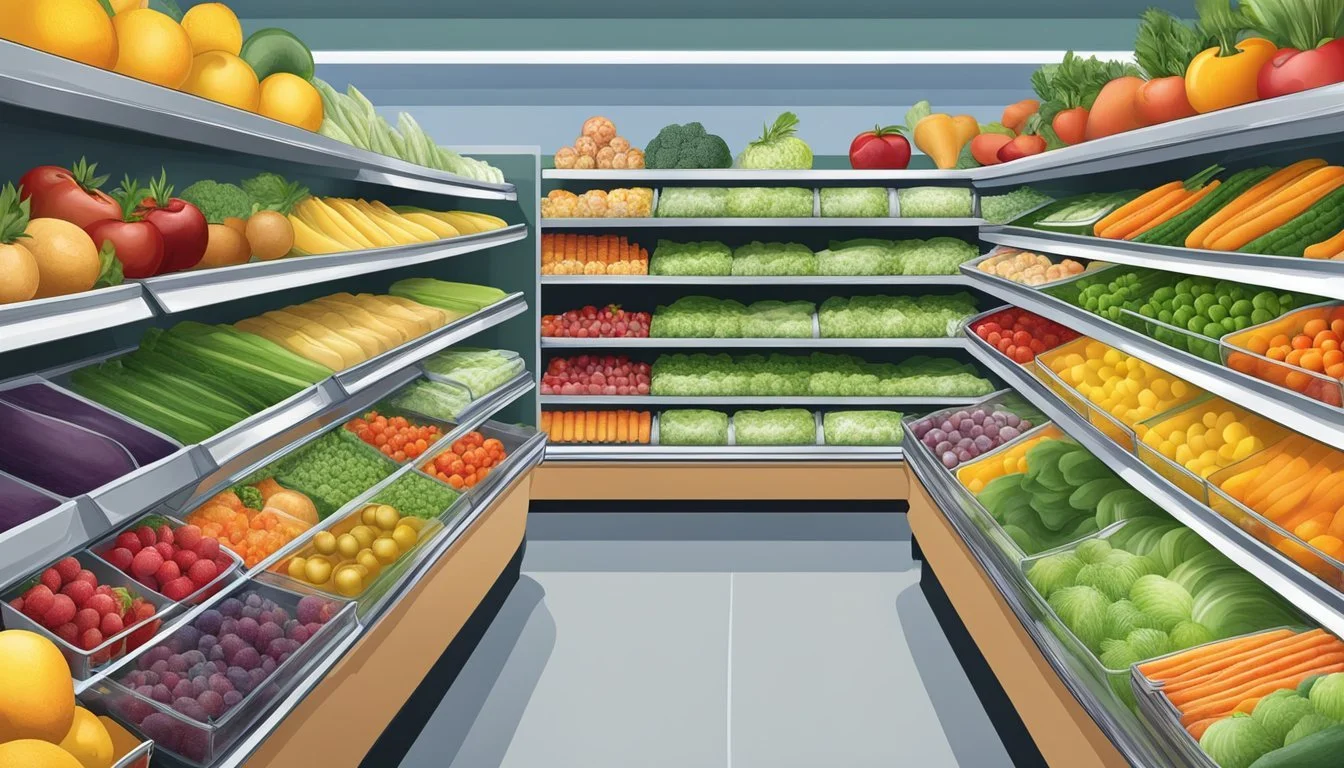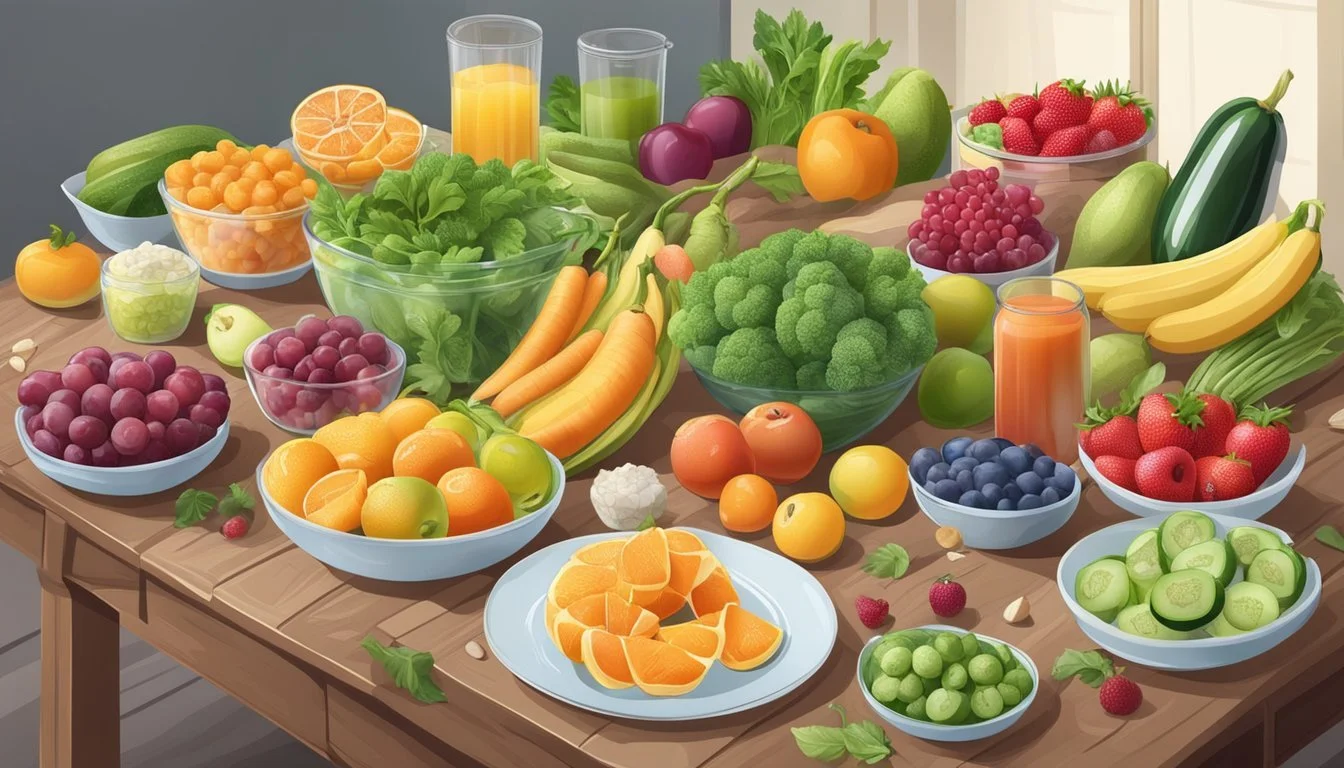Fresh vs Frozen Fruits and Vegetables: A Comprehensive Comparison of Nutrition, Taste, and Convenience
Fresh fruits and vegetables are often touted as the pinnacle of healthy eating. Their vibrant colors and crisp textures seem to promise superior nutrition. But are they always the best choice? Frozen produce offers convenience and year-round availability, leading many to question which option provides more nutritional value.
Both fresh and frozen fruits and vegetables can be healthy choices, offering similar nutritional benefits. Fresh produce is picked at peak ripeness and can be consumed immediately, while frozen fruits and vegetables are typically harvested at their prime and quickly frozen to lock in nutrients. This process can preserve vitamins and minerals effectively, sometimes even better than fresh produce that has been transported and stored for days.
The choice between fresh and frozen produce often comes down to personal preference, availability, and intended use. Fresh fruits and vegetables may have a slight edge in texture and flavor for raw consumption. Frozen options excel in convenience and can be particularly useful for cooking and smoothies. Ultimately, incorporating a variety of fruits and vegetables into one's diet, whether fresh or frozen, contributes to a healthy eating pattern.
Nutritional Comparison Between Fresh and Frozen Produce
Fresh and frozen fruits and vegetables offer comparable nutritional benefits, with some differences in specific nutrients. Both options can contribute to a healthy diet when properly selected and prepared.
Vitamin and Mineral Content
Fresh produce typically starts with higher levels of certain vitamins and minerals. However, nutrient content can decline during transportation and storage. Frozen fruits and vegetables are often picked at peak ripeness and quickly processed, potentially preserving more nutrients.
A 2014 study found that frozen blueberries retained similar or higher levels of vitamins compared to fresh ones after various storage periods. Frozen produce may have higher concentrations of certain antioxidants like carotenoids and polyphenols.
Water-soluble vitamins, such as vitamin C, are more susceptible to degradation in both fresh and frozen produce. Frozen vegetables may lose some water-soluble nutrients during blanching before freezing.
Effects of Processing on Nutrients
Freezing can help preserve many nutrients in fruits and vegetables. The process typically involves minimal processing, maintaining the nutritional integrity of the produce.
Blanching, a common pre-freezing step for vegetables, can cause some nutrient loss. However, it also helps preserve color, texture, and flavor while inactivating enzymes that could lead to further nutrient degradation.
Some nutrients, like fiber, remain stable during freezing. Others, such as vitamin E and minerals like iron and potassium, are generally well-preserved in frozen produce.
Impact of Storage and Transportation
Fresh produce may lose nutrients during long-distance transportation and extended storage periods. Factors like temperature, light exposure, and handling can affect nutrient retention.
Frozen fruits and vegetables have a longer shelf life, allowing for consistent nutrient content over time. Proper freezer storage helps maintain nutritional value for several months.
Fresh produce consumed shortly after harvest often provides optimal nutrient content. However, frozen options can be nutritionally comparable or superior when fresh produce has been stored for extended periods.
Local, seasonal fresh produce may offer nutritional advantages due to shorter transportation times and faster consumption after harvest.
Health Benefits and Risks
Fresh and frozen fruits and vegetables offer numerous health advantages, but some potential drawbacks exist. Both options can contribute to a nutritious diet when chosen wisely.
Contribution to Healthy Lifestyle
Fruits and vegetables, whether fresh or frozen, provide essential vitamins, minerals, and fiber. They help lower blood pressure and reduce risks of heart disease and stroke. Antioxidants in these foods may protect against certain cancers. Frozen produce often retains nutrients well, sometimes even better than fresh options that have been stored for days. A study found frozen apricots had higher levels of antioxidants, beta-carotene, and vitamin C compared to fresh.
Eating a variety of colorful fruits and vegetables supports overall health. The convenience of frozen produce can make it easier to meet the recommended 4.5 cups daily intake. This accessibility may lead to increased consumption, especially when fresh options are limited or out of season.
Potential for Added Sugars and Sodium
While nutritious, some frozen fruits and vegetables come with risks. Frozen fruits may contain added sugars, increasing calorie content. It's important to check labels and choose unsweetened varieties. Some frozen vegetables have added sodium for preservation, which can be a concern for those monitoring salt intake.
Canned fruits and vegetables often have higher levels of added sugars and sodium than fresh or plain frozen options. Rinsing canned vegetables can reduce sodium content. When selecting canned fruits, opt for those packed in water or natural juice rather than syrup.
Fresh produce carries a slight risk of bacterial contamination, but proper washing reduces this concern. Frozen fruits and vegetables undergo processing that typically eliminates harmful bacteria.
Buying and Storing Tips
Selecting and preserving fruits and vegetables properly ensures maximum nutrition and flavor. Consider seasonality, local availability, and effective storage methods to get the most value and quality from your produce.
Seasonal and Regional Considerations
Buying fruits and vegetables in season often results in better taste and lower prices. Local farmers' markets offer fresh, regional produce at peak ripeness. In spring, look for asparagus and strawberries. Summer brings tomatoes and peaches. Fall harvests include apples and squash. Winter offers citrus fruits and root vegetables.
Out-of-season produce is typically imported or grown in greenhouses, which can affect quality and cost. Frozen options provide year-round access to out-of-season items without sacrificing nutritional value.
Shelf Life and Preservation Methods
Fresh produce has varying shelf lives. Berries and leafy greens spoil quickly, while apples and potatoes can last weeks if stored properly. Refrigerate most fresh vegetables to extend their life, but keep tomatoes and bananas at room temperature.
Frozen fruits and vegetables can last 6-12 months in the freezer. Thaw frozen produce in the refrigerator or use directly in cooking. Canned items offer long shelf life but may have added salt or sugar.
Proper storage is key. Use perforated plastic bags for vegetables in the fridge. Store fruits in a cool, dry place. Check produce regularly and use the oldest items first to minimize waste.
Culinary Uses and Cooking Methods
Fresh and frozen fruits and vegetables offer distinct advantages in the kitchen. Their preparation methods, flavor profiles, and suitability for various dishes can significantly impact cooking outcomes.
Differences in Preparation
Fresh produce often requires washing, peeling, and chopping before use. Frozen fruits and vegetables come pre-washed and cut, saving time in the kitchen. Frozen peas, corn, and green beans can be added directly to dishes without thawing.
Fresh spinach wilts quickly when heated, while frozen spinach maintains its structure better in cooked dishes. Frozen berries release more juice when thawed, making them ideal for smoothies and sauces.
Cooking times vary between fresh and frozen vegetables. Frozen broccoli and cauliflower may require shorter cooking times to prevent overcooking and mushiness.
Flavor and Texture in Recipes
Fresh fruits and vegetables generally offer superior texture and taste in raw applications. Crisp carrots and juicy tomatoes shine in salads and crudités.
Frozen produce can match or exceed fresh options in cooked dishes. Frozen peas often taste sweeter and more flavorful than their fresh counterparts when used in soups or stir-fries.
Texture differences become less noticeable in pureed dishes like smoothies or sauces. Frozen raspberries blend seamlessly into smoothies, providing intense flavor and vibrant color.
Heat affects frozen vegetables differently than fresh. They may release more water during cooking, potentially impacting sauce consistency in some recipes.
Suitability for Different Dishes
Fresh produce excels in dishes where texture and appearance are crucial. Crisp vegetables are preferred for stir-fries, while ripe fruits are ideal for fresh fruit tarts.
Frozen fruits and vegetables shine in baked goods, smoothies, and cooked dishes. They maintain their nutritional value and are convenient for year-round use.
Frozen spinach works well in dips and lasagna, while frozen corn adds sweetness to chowders. Frozen berries make excellent pie fillings and compotes.
For soups and stews, both fresh and frozen vegetables perform similarly. The long cooking times allow flavors to meld, minimizing textural differences.
Economic and Environmental Considerations
The choice between fresh and frozen produce impacts both wallets and ecosystems. Price fluctuations and carbon footprints play key roles in determining the most sustainable options.
Cost and Affordability
Frozen fruits and vegetables often provide a more economical choice for consumers. Their longer shelf life reduces food waste, saving money in the long run. Seasonal price spikes affect fresh produce more dramatically, while frozen options maintain relatively stable pricing year-round.
Bulk purchases of frozen items can further increase affordability. Processing and freezing techniques allow for harvesting at peak ripeness, potentially offering better value for nutrients per dollar spent.
However, fresh produce can be more cost-effective when bought in season from local sources. Farmers' markets and community-supported agriculture programs sometimes offer competitive prices for fresh items.
Evaluating Environmental Impact
Transportation and storage methods significantly influence the environmental footprint of produce. Fresh fruits and vegetables may require energy-intensive refrigerated transport over long distances.
Frozen produce is often processed near harvest locations, reducing initial transportation needs. However, long-term freezer storage consumes electricity continuously.
Food waste is a critical factor. Fresh produce spoils quickly, contributing to landfill waste. Frozen options allow for longer storage and portioned use, potentially decreasing overall waste.
Processing frozen goods requires energy, but this may be offset by reduced spoilage. The environmental impact varies depending on the specific item, production methods, and storage duration.
Consumer Convenience
Frozen and fresh produce options offer different levels of convenience for consumers. Factors like ease of use and availability impact purchasing decisions and meal preparation.
Ease of Use
Frozen fruits and vegetables come pre-washed, cut, and ready to use. This saves significant prep time in the kitchen. Many frozen options can be microwaved or added directly to recipes.
Fresh produce often requires washing, peeling, and chopping before use. However, some stores now offer pre-cut fresh fruits and vegetables for added convenience.
Canned fruits and vegetables are shelf-stable and require no preparation. They can be opened and used immediately in recipes or as side dishes.
Availability and Accessibility
Frozen produce is available year-round, regardless of growing seasons. It has a long freezer shelf life, reducing food waste.
Fresh fruits and vegetables may have limited seasonal availability for certain items. They generally need to be consumed within days or weeks of purchase.
Canned options offer extended shelf life at room temperature. This makes them accessible for stocking up and emergency food supplies.
Frozen and canned produce can be more budget-friendly, especially for out-of-season items. Fresh organic produce tends to be pricier but is increasingly available in many stores.
Best Practices for Preparation and Use
Proper preparation techniques maximize the nutritional value and quality of both fresh and frozen produce. Careful handling and appropriate cooking methods ensure optimal taste and texture.
Thawing and Cooking Frozen Produce
Avoid thawing frozen fruits and vegetables at room temperature. Instead, thaw in the refrigerator or use the microwave's defrost setting. For vegetables, blanching before freezing helps preserve color, texture, and nutrients.
Cook frozen vegetables quickly to retain nutrients. Steaming or microwaving with minimal water is ideal. Avoid overcooking, which can lead to nutrient loss and mushy texture.
For frozen fruit, use in smoothies without thawing or gently warm for pies and cobblers. Remove any ice crystals before use to prevent excess water in recipes.
Rinsing and Preparing Fresh Produce
Rinse all fresh produce under cool running water, even if you plan to peel it. This removes surface dirt and reduces the risk of foodborne illness.
Use a produce brush on firm fruits and vegetables like apples and potatoes. For leafy greens, soak briefly in cold water, then rinse thoroughly.
Dry produce with a clean cloth or paper towel to remove excess moisture. This step is crucial for items like berries to prevent mold growth.
Cut produce just before use to minimize nutrient loss. Store prepared fruits and vegetables in airtight containers in the refrigerator if not using immediately.




